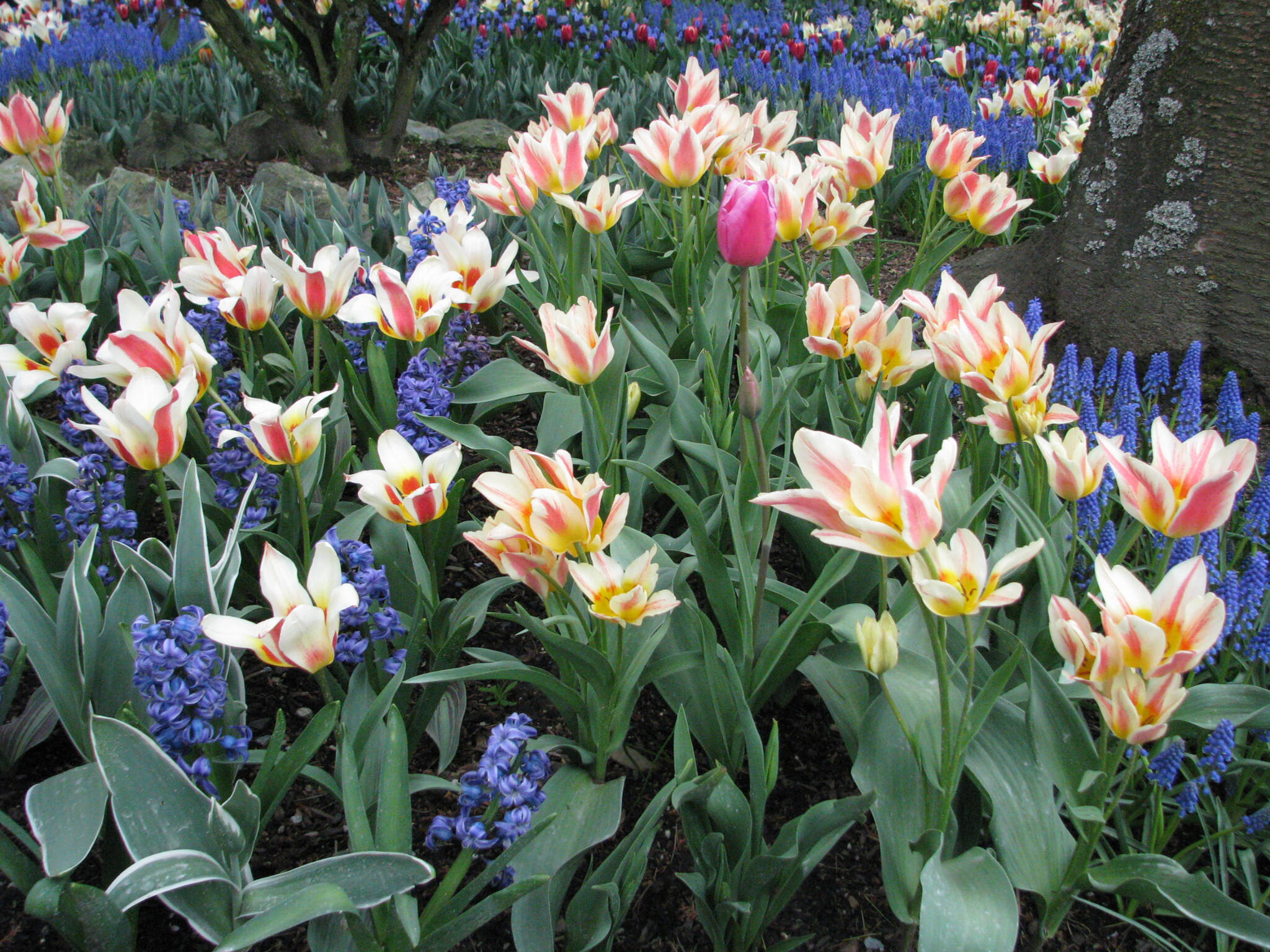Daffodils, tulips, hyacinths, and other spring flowering bulbs bring vibrant color to gardens. But what do we do when those colorful blossoms fade?
Although it may be tempting to cut the foliage back after they bloom, here we will explain why you should hold back those clippers and how to give your spring bulbs the tender loving care they need to flourish in subsequent years.
Botanically, the terms bulbs, corms, tubers, tuberous roots, and rhizomes describe types of plants that uniquely have an underground organ to store food.
A true bulb has layers of large scales, modified leaves that store nutrients, and a small basal plate (bottom) where roots and shoots form. Some bulbs have a tunic (a paper-like covering) that surrounds the outside. Tulips, hyacinths, daffodils, fritillaria, and Dutch iris are among the many hardy flowering bulbs.
Corms have small scales and food is stored in its enlarged basal plate. Cormels (baby corms) as well as roots emerge from the bottom of the basal plate. Crocus is an example of a spring-blooming corm. Rhizomes (e.g., bearded Iris and camas) and tubers (e.g., Begonias and cyclamen) are two different kinds of underground stems, which store the nutrients. Tuberous roots of dahlias, Agapanthus and daylilies store nutrients in enlarged roots.
These plants are commonly and collectively referred to as “flowering bulbs” which need their leaves to photosynthesize and make food to store over the winter and produce next year’s flowers.
If the leaves are cut too early, the plant has no way to gather and convert the sunlight and water to carbohydrates that it needs to sustain through winter dormancy.
The leaves need to be exposed to sunlight for about eight weeks after they have bloomed in order to feed the bulbs, so don’t cut them back until they are yellow and limp. Some people tie them up, or braid them, or tuck them under other plants to hide them, but that deprives them of the sun that they need. Cut back the flowering stalks as soon they are done blooming so that they don’t take away energy from the bulb, but leave the foliage loose.
This is also a good time to feed your bulbs with 1 to 2 tablespoons of bone meal or granular 5-10-5 or 5-10-10 fertilizer spread around each clump of bulbs. Do not use a high nitrogen fertilizer because you do not want to encourage leaf growth. The bulb needs to store the phosphorus and potassium for next year’s blossoms.
Interplant later blooming perennials, shrubs, or annuals (such as snap dragons and pansies) to hide the dying leaves if you feel they detract from the garden. When you are ready, cut the leaves back to ground level.
If the clumps are getting too crowded, you can dig them up, divide them, and replant them any time after the foliage turns yellow. It is usually easier to divide at the same time you cut the foliage back, when you know exactly where the bulbs are. Tulips are likely to be less showy after the first two years of growth and it is recommended that you divide them every three to four years.
Apply a little bit of care and proper foliage removal, then forget about them over the fall and winter while the bulbs work their magic for a spectacular show of color next spring.
Amanda Rosenberg is a 14-year veteran Clallam County Master Gardner.
Time to trim
Cut leaves back to the base after they turn yellow and start falling down — about eight weeks after spring bulbs have finished blooming. Check out these flowering bulbs, listed by bloom time and approximate cut-back date.
Early bloomers — Snowbells (Galanthus), crocus; Mid-may to early June
Mid-spring — Daffodils, Fritillaria, tulips, hyacinth and grape hyacinth, glory of the snow (Chionodoxa), dwarf iris (Iris reticulata); June
Late spring/after June — Dutch iris (Iris hollandica) Allium; Early Summer
‘Growing Tomatoes in the Pacific Northwest’
Make sure to join us for the upcoming Digging Deeper presentation “Growing Tomatoes in the Pacific Northwest” from 10:30 a.m.-noon Saturday, May 21, at the Woodcock Master Gardener Demonstration Garden, 2711 Woodcock Road. Clallam County Master Gardeners Jan Bartron, Betsy Burlingame, Laurel Moulton, Dave Rambin, Jeanette Stehr-Green and Audreen Williams (aka the Tomato Dream Team). They will share tips on growing tomatoes successfully in our short, cool growing season. The presentation will take place at the In addition to the presentation on May 21st, a team of Master Gardeners will be available from 10 a.m.-1 p.m. to answer all gardening questions. Digging Deeper attendees are encouraged to bring samples of garden problems or pests for diagnosis and recommended control measures. For more information, visit extension.wsu.edu/clallam/master-gardener-calendar.


